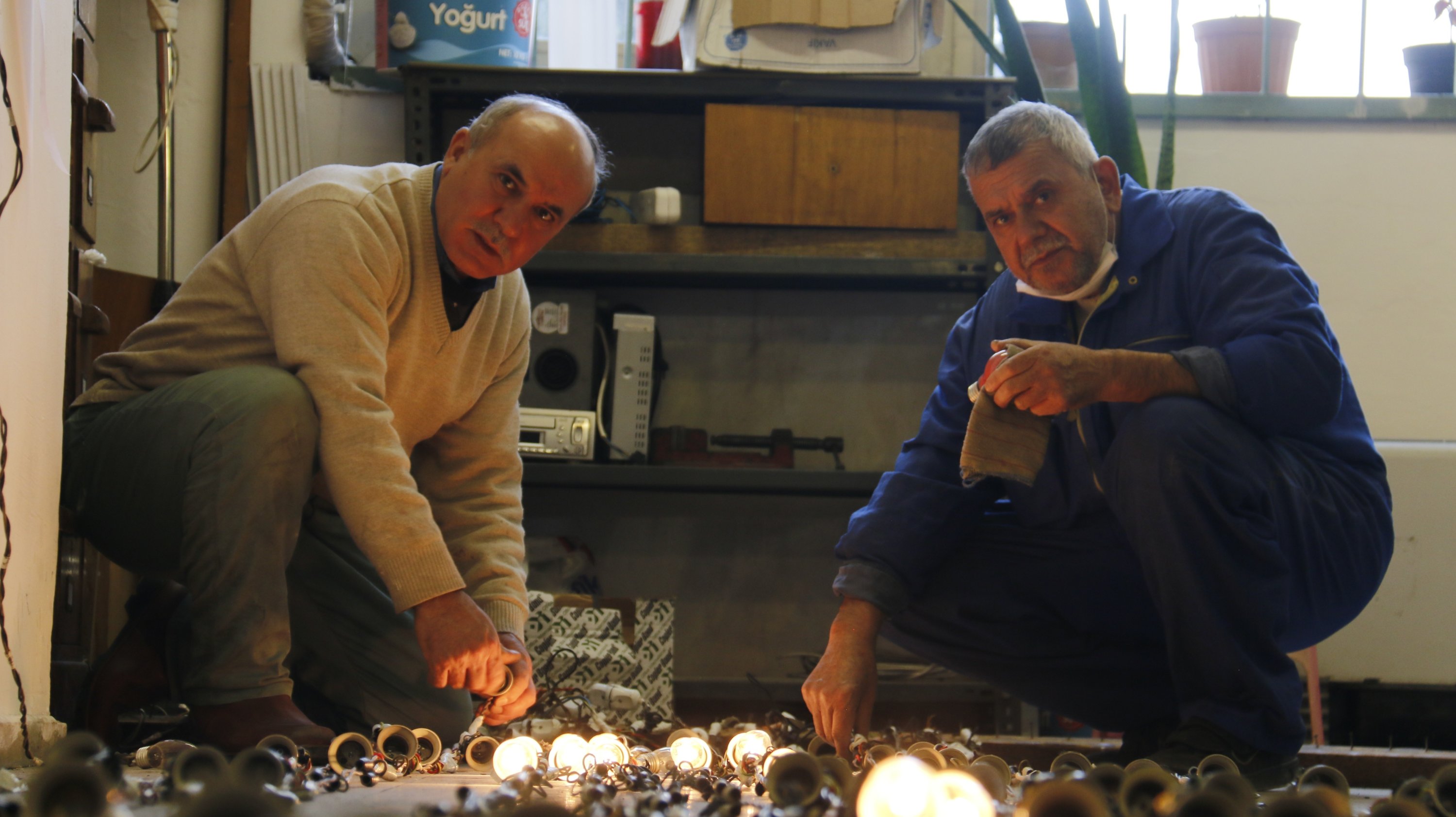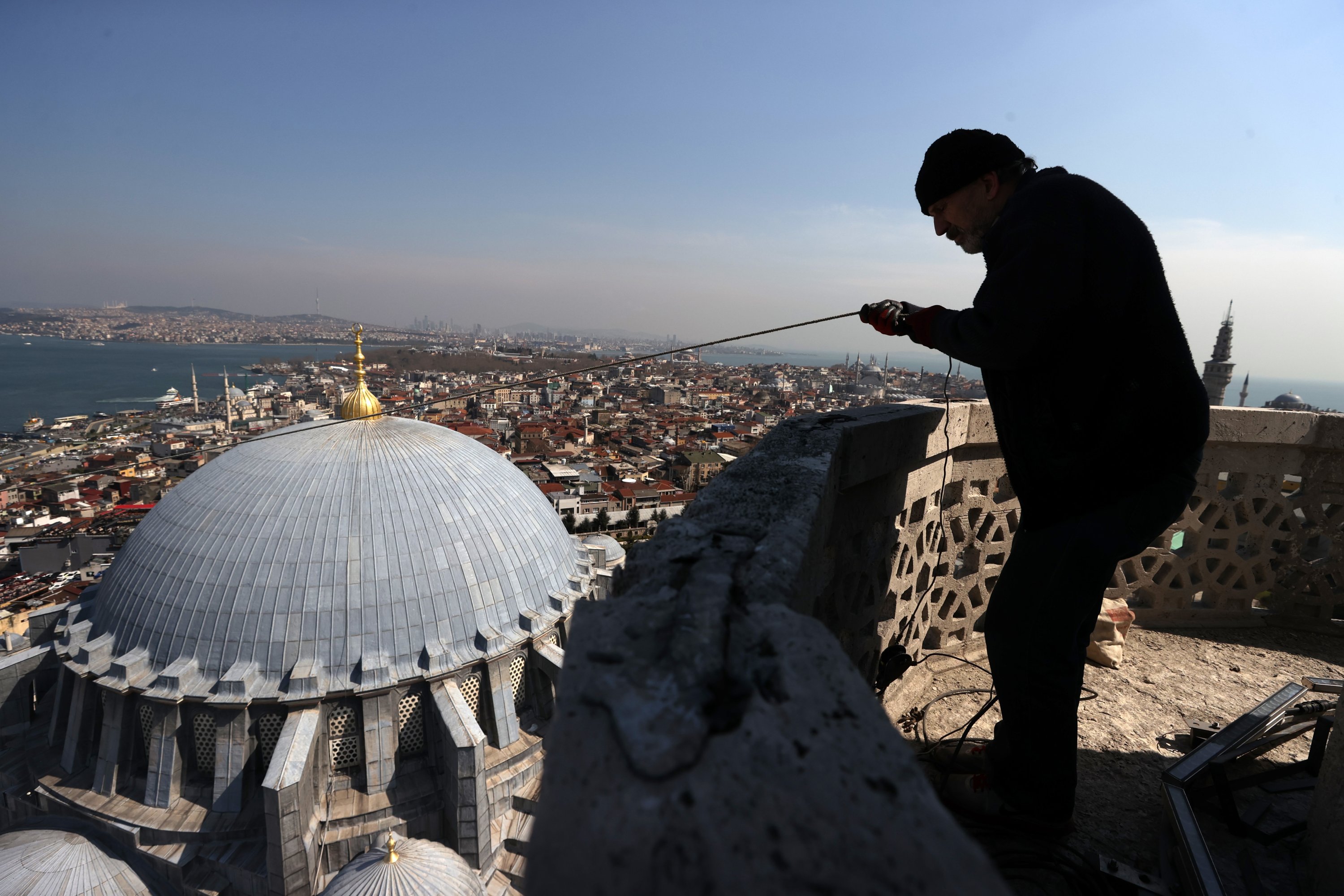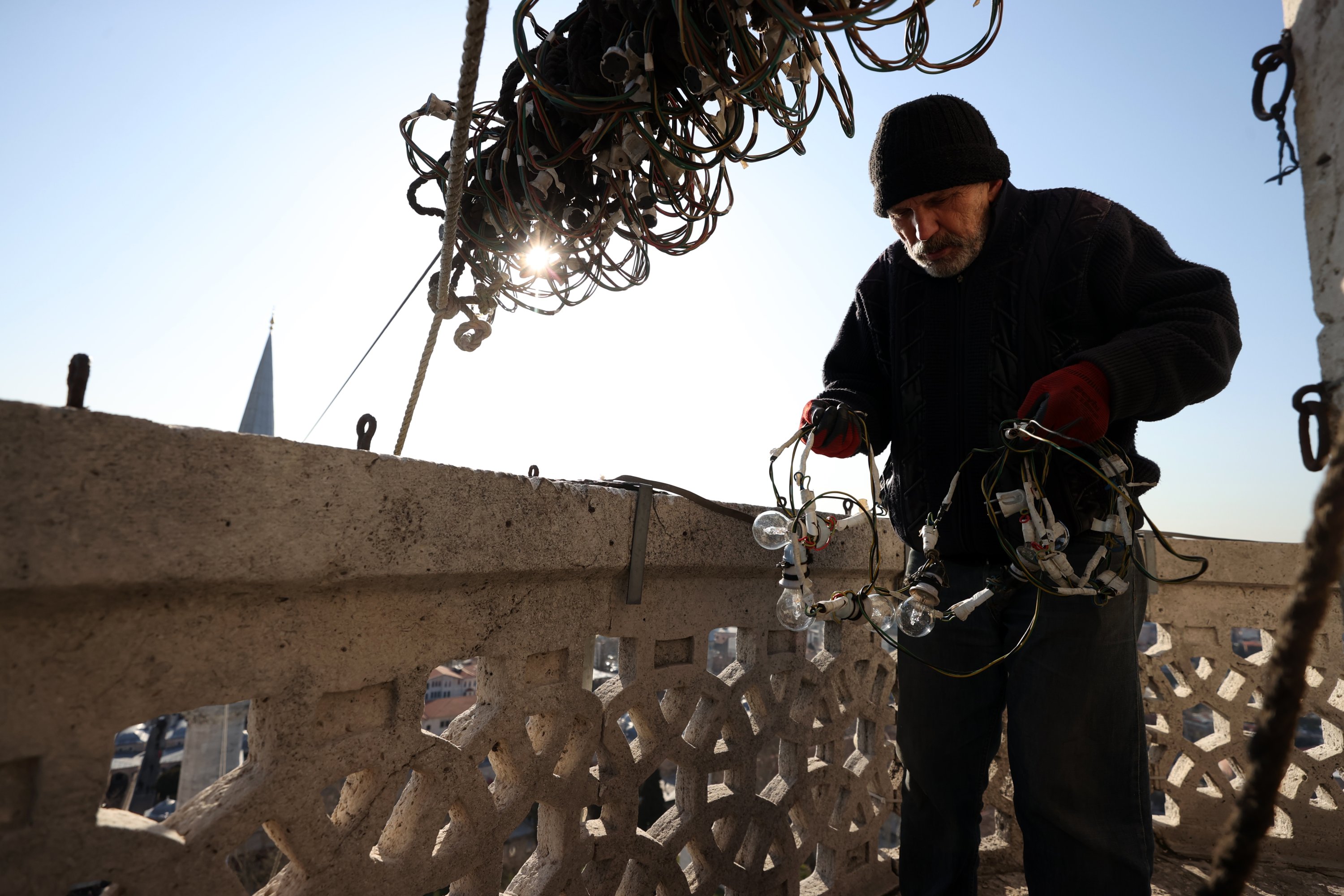© Turkuvaz Haberleşme ve Yayıncılık 2026
In the towering minarets of Istanbul, Kahraman Yıldız, a mahya master, preserves the old Ramadan art by illuminating the minarets for the "sultan of 11 months".
There are only a few days left to start the blessed month of Ramadan, which is awaited by the Islamic world. While thousands of Muslims are looking forward to starting their fasting, mayha illuminations are ready to light up the streets of Istanbul at night with their celestial messages. Likewise, mahya lights reflecting on the waters of the Bosporus fascinate those who see it.

One of the last mahya masters of our time, Kahraman Yıldız, who was an apprentice to the last mahya craftsperson of the Ottoman Empire, placed mahya with the inscription "Ramadan is Love" between the minarets of Süleymaniye Mosque. Master Kahraman, working with a team of six, prepared the mahyas in his workshop located in Taksim. Stating that his 450-year-old profession is an ancestral heirloom, "We are the last soldiers of this profession. I hope there will be more from the new generation." Kahraman Yıldız spoke said.

Yıldız and his team came to Süleymaniye Mosque and went up to the minaret to hang the mahya, accompanied by a stunning view of the Golden Horn. The moments when the masters hung the mahyas were viewed from the air.
Mahya is the modern Turkish form of the Ottoman word "mahiyye (monthly, special for the month), formed with the Arabic suffix -iyye from the Persian word "mah," which means "month." Just as the months of Rajab, Shaban and Ramadan are referred to as "three months," mahya has acquired the meaning of "specific to the month of Ramadan" as this practice is only done during this holy month. Still, the tradition of equipping mosques with oil lamps for worship on blessed days and nights dates back to the first centuries of Islam, with "kandil" nights serving as prominent examples. According to Islamic scholars, Masjid al-Haram had 455 lamps, some of which were lit only during Ramadan and the pilgrimage season.
Even though the exact date of when the mahya tradition was introduced to Ottoman culture is unknown, 16th-century German Lutheran theologian and Orientalist Salomon Schweigger depicted mahyas in his famous travel book during his visits to Istanbul. Mahyas are thought to have originated during the reign of Sultan Ahmed I, who was pleased by the mahya that he saw between the minarets of Sultan Ahmed Mosque. He then ordered that they should be displayed in each part of the empire.

The mahyacı, the person who designs the script, hangs the message on minarets with ropes and hooks so that the devotional messages can be seen from afar, inspiring believers during fasting days. After the Tarawih prayer, a voluntary prayer exclusive to Ramadan evenings, people gather in the courtyards of mosques to see the mahyas. Besides being an art form, mahyas are all about the awareness of faith and the sense of brotherhood shared during the month of Ramadan.
The set of lights strung between the rising minarets was originally fueled by olive oil and replenished every evening. An average of 6.5 kilograms (14 pounds) of olive oil was consumed nightly. After the Ottoman period, mahyas were also hung with electric bulbs but could not produce the effect of the ones constructed with oil lamps. Today, all mahyas are made with electric light bulbs.

The minarets will be giving messages on the themes of faith, direction and righteousness this year. Last year, mahyas included messages such as "Ramadan is the month of recovery" to highlight the COVID-19 pandemic. The themes are determined each year by the Presidency of Religious Affairs (Diyanet).
"We hung 'Welcome, fasting month' at Eyüp Sultan Mosque and 'What did you do for Allah today' at Süleymaniye Mosque, while the Blue Mosque displays the message of 'The true religion is Islam,'" he added.
"We will change the writing of the mahya every day during Ramadan. Around 400-450 years ago, people would visit the mosques to view mahyas when there was no electricity."
